Our lenses (Red & Blue/cyan) are not of thin paper like plastic films , but they are made of thicker (1.8 mm thick) plastic lenses. Material used is PMMA, which is used in normal sunglass lenses.
Quick Details:
Description:
Anaglyph 3D is the name given to the stereoscopic 3D effect achieved by means of encoding each eye's image using filters of different (usually chromatically opposite) colors, typically red and cyan. Anaglyph 3D images contain two differently filtered colored images, one for each eye. When viewed through the "color coded" "anaglyph glasses", each of the two images reaches one eye, revealing an integrated stereoscopic image. The visual cortex of the brain fuses this into perception of a three dimensional scene or composition.
Anaglyph images have seen a recent resurgence due to the presentation of images and video on the Internet, Blu-ray Discs, CDs, and even in print. Low cost plastic-framed glasses hold accurate color filters that typically, make use of all 3 primary colors. The current norm is red and cyan, with red being used for the left channel. There is a material improvement of full color images, with the cyan filter, especially for accurate skin tones.
Video games, theatrical films, and DVDs can be shown in the anaglyph 3D process. Practical images, for science or design, where depth perception is useful, include the presentation of full scale and microscopic stereographic images. A recent application is for stereo imaging of the heart using 3D ultra-sound with plastic red/cyan glasses.
Anaglyph images are much easier to view than either parallel (diverging) or crossed-view pairs stereograms.
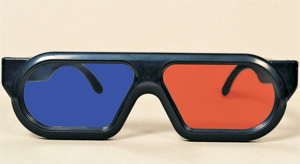
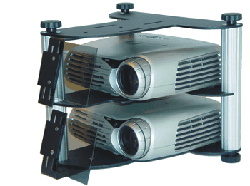 Dual-projector polarized 3D systems are used in most 3D theaters. IMAX 3D, Real D, Real Image ,UFO and Master Image 3D all use this 3D display technology. The method is somewhat simple and elegant when compared to alternate-frame sequencing. There is no mechanical trickery required to cover one of the viewer's eyes at a time or technology needed to sit on the viewer's head in the form of expensive LCD glasses.
Dual-projector polarized 3D systems are used in most 3D theaters. IMAX 3D, Real D, Real Image ,UFO and Master Image 3D all use this 3D display technology. The method is somewhat simple and elegant when compared to alternate-frame sequencing. There is no mechanical trickery required to cover one of the viewer's eyes at a time or technology needed to sit on the viewer's head in the form of expensive LCD glasses.
However with Dual Projector Polarized syatem, you do need passive polarized glasses, but the cost is insignificant compared to LCD shutter glasses. Not coincidentally, this is why the method is so prevalent in theaters where patrons might accidentally damage the equipment.
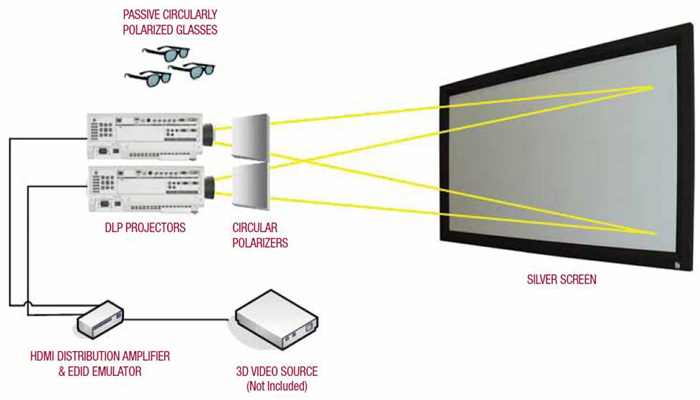
This technology makes use of the polarization of light, a relatively old and commonly-used technique . A dual-projector polarized theater relies on two projectors to deliver video to the screen, with each projector delivering a unique perspective for a specific eye. Each projector lens is attached to its own polarized Glass filter.
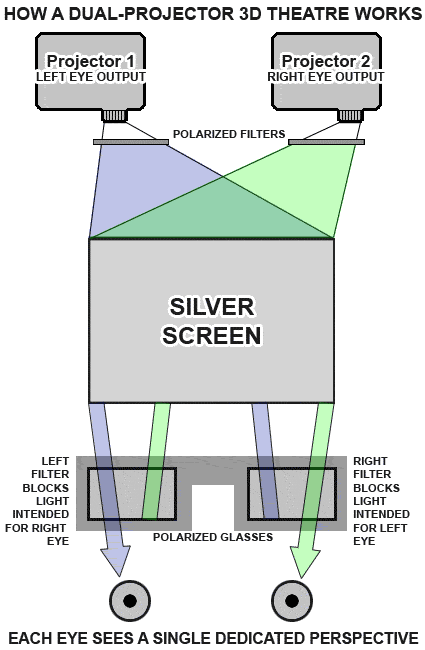
The viewer has to wear glasses, but the glasses contain no electronic parts. Instead, the glasses simply employ passive polarized lenses. The lens over the right eye will block out the polarized video that is intended for the left eye, and the lens over the left eye will block out the polarized video intended for the right eye. This way, each eye only sees its intended perspective, even though both perspectives are displayed on the same screen. Thus illusion of depth is created.
The purpose of 3D glass is to allow each eye to see slightly different image. Which are then combined by your brain to perceive a three dimensional image from the screen.
Dual-projector polarization is used not only in theaters, but also in some specialty monitors designed for the PC. When used in a monitor, a polarized filter is located directly on top of the monitor's screen. Three examples of this are the LG Cinema 3D T.V. , iZ3D and Zalman 3D monitors.
What are the advantages of dual-projector polarization?
What are the disadvantages to a polarized setup?
First, crosstalk can be an issue with dark scenes. The polarized filters are never 100% perfect at blocking all of the light from one of the projectors, so if there is a dark scene and a bright object, some light on the edge of the bright object might be seen with the wrong eye. But if it doesn't bother you in the theater, then it probably won't bother you at home.
We can provide 3D Left circular Glass Polarized Filter & 3D Right circular Glass Polarized Filter. Our prices are very reasonable.
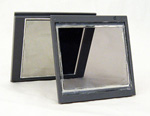 These filters are to be fixed with any clamping mechanism suitable to you in front of the two projector Lenses. Filters should be placed & fixed at a distance from projector lens, so as to avoid heating Of Polarized Glass filters.
These filters are to be fixed with any clamping mechanism suitable to you in front of the two projector Lenses. Filters should be placed & fixed at a distance from projector lens, so as to avoid heating Of Polarized Glass filters.
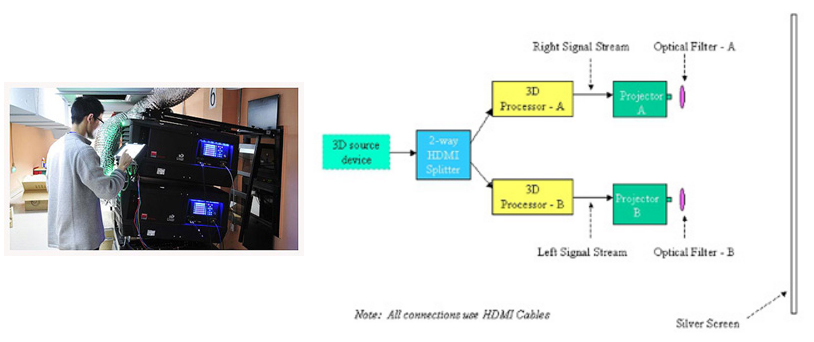
Welcome to the 3D Market, where you can browse our amazing selection of paper and plastic 3D glasses. We introduce ourselves as MANUFACTURERS AND SUPPLIERS of 3D Glasses. We offer high quality 3D glasses suitable for all types of 3D projection systems
( passive ) , such as Master Image , Real D , 2K , Technicolor , UFO passive system , I-max , Qube , Depth Q etc.
Our's is 35 years old optical goods manufacturing companyexperienced in the field of sunglasses , Photochromic Lenses , CR-39 Polarized sunglasses , Optical frames & lenses.
‘3-D’ Digital projection system evolved with “AVATAR”.
We have supplied more than half million 3D Glasses for Films like:
| 1 | Ra.One (3D) | 12 | Haunted (3D) |
| 2 | Gravity | 13 | Don2 |
| 3 | Jungle Book | 14 | Kung Fu Panda 3 |
| 4 | Spider-Man 3 | 15 | Batman vs Superman |
| 5 | The Angry Birds | 16 | Independence Day - Resurgence |
| 6 | LIFE OF PI | 17 | STAR TREK |
| 7 | SUPERMAN | 18 | IRON MAN |
| 8 | RAAZ - 3 | 19 | SHIVAJI THE BOSS |
| 9 | SHIVA KA INSAAF | 20 | CHHOTA CHETAN |
| 10 | Several other films in 1985-86. | 21 | Dam-999 |
| 11 | Harry Potter | 22 | Tintin |